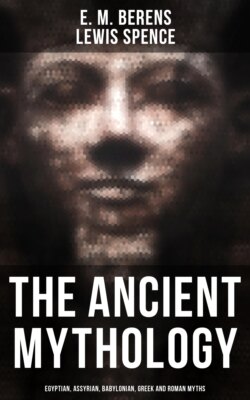Читать книгу The Ancient Mythology: Egyptian, Assyrian, Babylonian, Greek and Roman Myths - Lewis Spence - Страница 45
На сайте Литреса книга снята с продажи.
Was Babylonian Religion Semitic in Type?
ОглавлениеIt has already been stated that the religion of ancient Babylon was probably greatly influenced by those non-Semitic people whom the Semitic Babylonians found occupying the country when they entered it. The question then arises (and it is one of high importance), how far did the religion of ancient Babylonia and Assyria partake of the character of that group of religions which has been called 'Semitic.' The classical pronouncement upon this phase of the subject is probably that of the late Professor Robertson Smith, who in his Religion of the Semites (p. 13) says1: "The preponderating opinion of Assyriologists is to the effect that the civilization of Assyria and Babylonia was not purely Semitic, and that the ancient population of these parts contained a large pre-Semitic element, whose influence is especially to be recognized in religion and in the sacred literature of the cuneiform records. If this be so, it is plain that the cuneiform material must be used with caution in our enquiry into the type of traditional religion characteristic of the ancient Semites. That Babylonia is the best starting-point for a comparative study of the sacred beliefs and practices of the Semitic peoples, is an idea which has lately had some vogue, and which at first sight appears plausible on account of the great antiquity of the monumental evidence. But, in matters of this sort, ancient and primitive are not synonymous terms; and we must not look for the most primitive form of Semitic faith in a region where society was not primitive. In Babylonia, it would seem, society and religion alike were based on a fusion of two races, and so were not primitive but complex. Moreover, the official system of Babylonian and Assyrian religion, as it is known to us from priestly texts and public inscriptions, bears clear marks of being something more than a popular traditional faith; it has been artificially moulded by priestcraft and statecraft in much the same way as the official religion of Egypt; that is to say, it is in great measure an artificial combination, for imperial purposes, of elements drawn from a number of local worships. In all probability the actual religion of the masses was always much simpler than the official system; and in later times it would seem that, both in religion and in race, Assyria was little different from the adjacent Aramæan countries. These remarks are not meant to throw doubt on the great importance of cuneiform studies for the history of Semitic religion; the monumental data are valuable for comparison with what we know of the faith and worship of other Semitic peoples, and peculiarly valuable because, in religion as in other matters, the civilization of the Euphrates-Tigris valley exercised a great historical influence on a large part of the Semitic field."
